
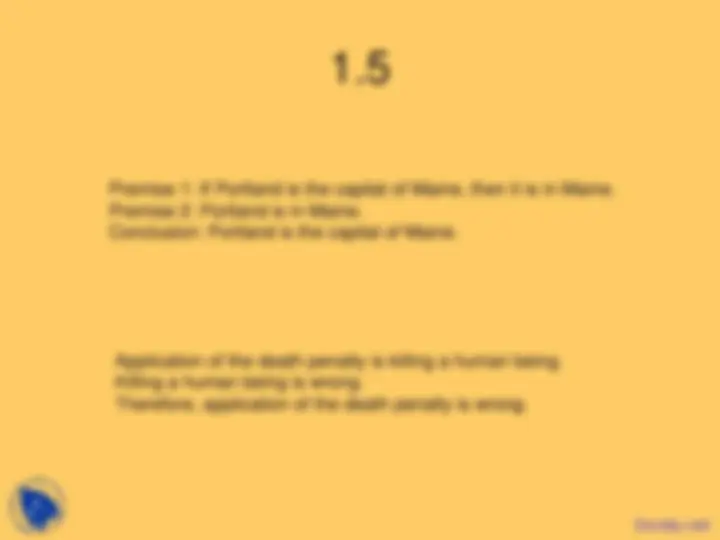
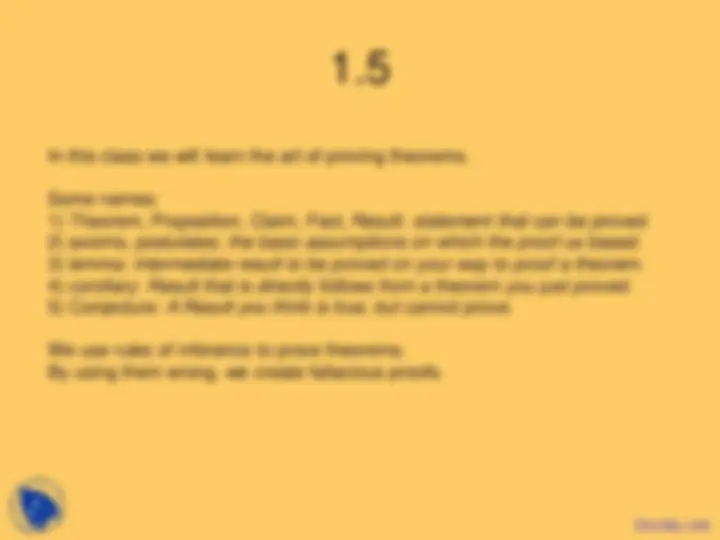
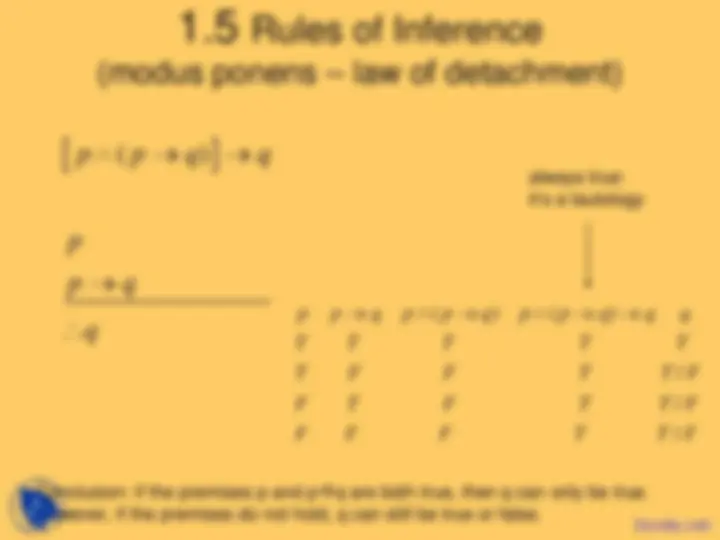
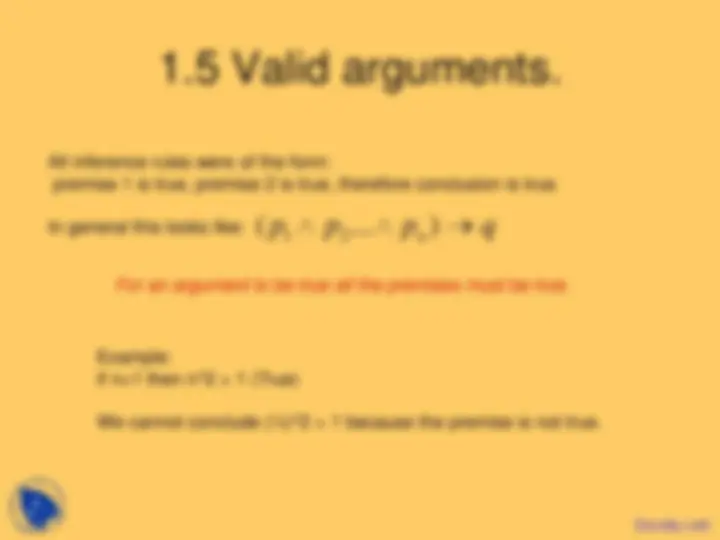
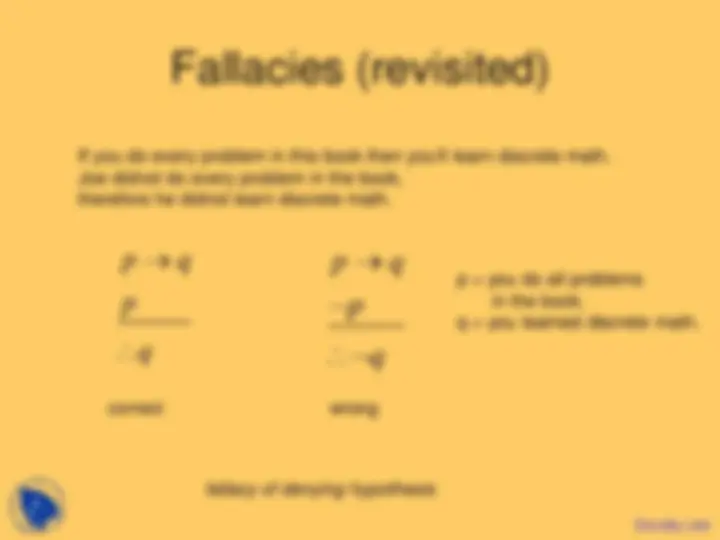
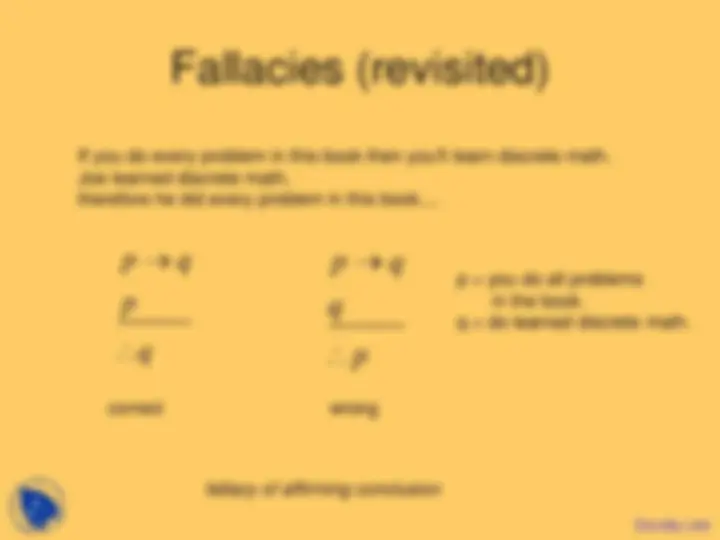
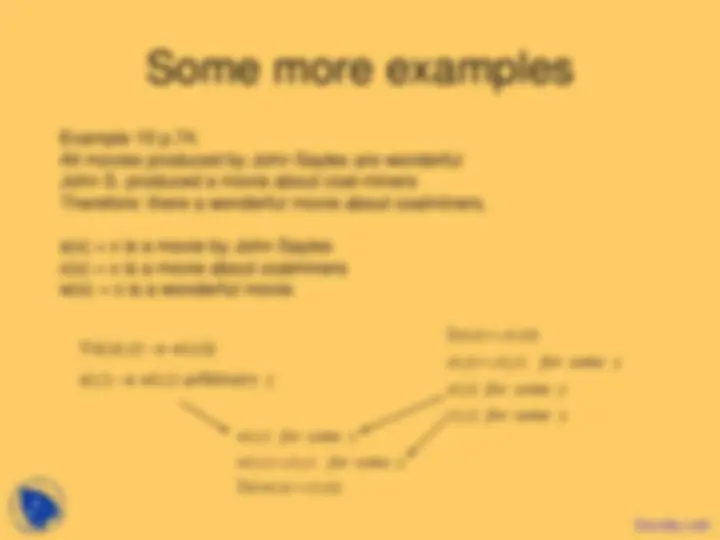
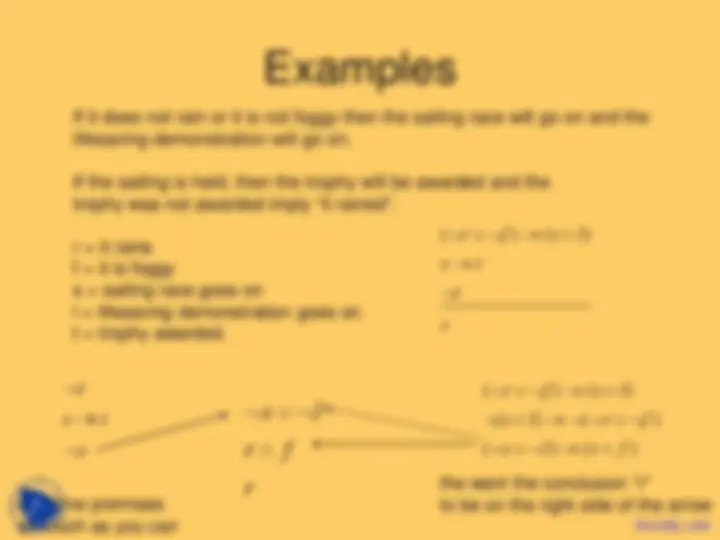
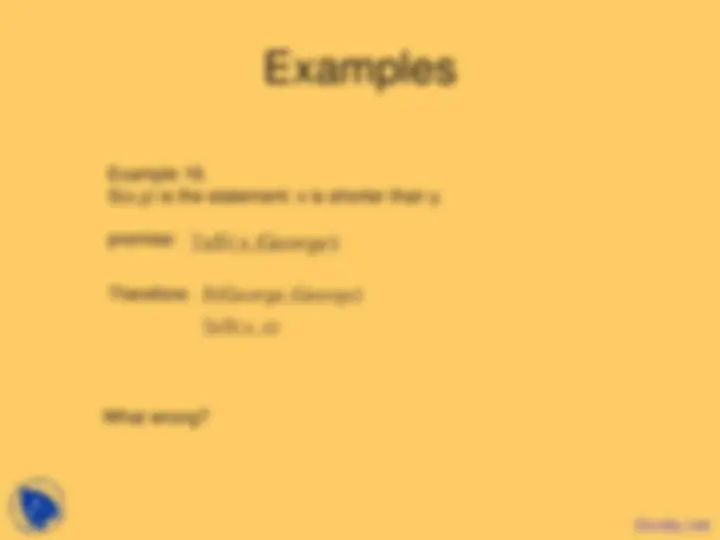
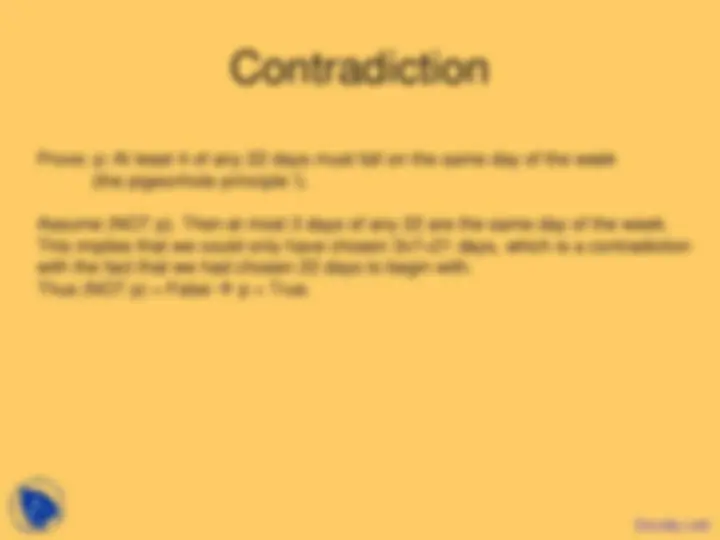


Study with the several resources on Docsity

Earn points by helping other students or get them with a premium plan


Prepare for your exams
Study with the several resources on Docsity

Earn points to download
Earn points by helping other students or get them with a premium plan
Community
Ask the community for help and clear up your study doubts
Discover the best universities in your country according to Docsity users
Free resources
Download our free guides on studying techniques, anxiety management strategies, and thesis advice from Docsity tutors
During the study of discrete mathematics, I found this course very informative and applicable.The main points in these lecture slides are:Methods of Proof, Fallacious Proofs, Positive Integers, Rules of Inference, Law of Detachment, Modus Ponens, Disjunctive Syllogism, Hypothetical Syllogism, Valid Arguments, Fallacy of Denying Hypothesis
Typology: Slides
1 / 18

This page cannot be seen from the preview
Don't miss anything!











What’s wrong with this?
2
2 2 2
In this class we will learn the art of proving theorems.
Some names:
We use rules of inference to prove theorems. By using them wrong, we create fallacious proofs.
always true: it’s a tautology
Conclusion: if the premises p and pq are both true, then q can only be true. However, if the premises do not hold, q can still be true or false. Docsity.com
Examples:
it snows today If it snows today we go skiing Therefore: we go skiing
[ p ( p q )] q p p q q
∧ → →
→ ∴
If it rains we do not have a barbeque today If we don’t have a barbeque today, we’ll have one tomorrow Therefore: If it rains today, we’ll have a BBQ tomorrow.
[ (^ p^ q^ )^ (^ q^ r^ )^ ] (^ p^ r) p q q r p r
→ ∧ → → → → → ∴ →
All inference rules were of the form: premise 1 is true, premise 2 is true, therefore conclusion is true.
For an argument to be true all the premises must be true.
Example: if n>1 then n^2 > 1 (True)
We cannot conclude (½)^2 > 1 because the premise is not true.
If you do every problem in this book then you’ll learn discrete math. Joe learned discrete math, therefore he did every problem in this book....
correct wrong
p = you do all problems in the book. q = do learned discrete math.
fallacy of affirming conclusion
1.5 Inference for Quantified Statements
( ) ( )
xP x P c for arbitrary c
∀
∴
( )
( )
P c for arbitrary c
∴∀ x P x
( ) ( )
xP x P c for some element c
∃ ∴
( )
( )
P c for some element c
∴∃ xP x
universal instantiation (^) universal generalization
existential instantiation existential generalization
Example 10 p.74. All movies produced by John Sayles are wonderful John S. produced a movie about coal-miners Therefore: there a wonderful movie about coalminers.
s(x) = x is a movie by John Sayles c(x) = x is a movie about coalminers w(x) = x is a wonderful movie.
s x c x s y c y for some y s y for some y c y for some y
( ) ( ) ( ) ( ( ) ( ))
w y for some y w y c y for some y x w x c x
∧ ∃ ∧
If it does not rain or it is not foggy then the sailing race will go on and the lifesaving demonstration will go on.
If the sailing is held, then the trophy will be awarded and the trophy was not awarded imply “it rained”.
r = it rains f = it is foggy s = sailing race goes on l = lifesaving demonstration goes on. t = trophy awarded.
t s t s
¬ → ¬
the want the conclusion “r” to be on the right side of the arrow
combine premises as much as you can Docsity.com
Direct proof of implication pq Assume p = true and use rules of inference to prove that q is true.
Indirect Proof of implication:: Assume q is not true, use rules of inference to prove that p is not true. (NOT q) (NOT p)
Proof by contradiction: Assume p is not true and use the rules of inference to prove a contradiction. (NOT p) False
Proof the following theorem: If n is an odd integer, then n^2 is an odd integer.
assume p (n is an odd integer). n = 2k+1 for some integer k, Then: n^2 = (2k+1)^2 = 4k^2 + 4k + 1 = 2 ( 2k^2 + 2k) + 1 = 2m+1, m integer
Proof that if 3n+2 is odd, then n = odd.
Assume (NOT q) : n = even. Then n = 2k, 3n+2 = 6k + 2 = 2(3k+1) = 2m. Thus, 3n+2 is even. We have proved (NOT q) (NOT p) which is equivalent to pq